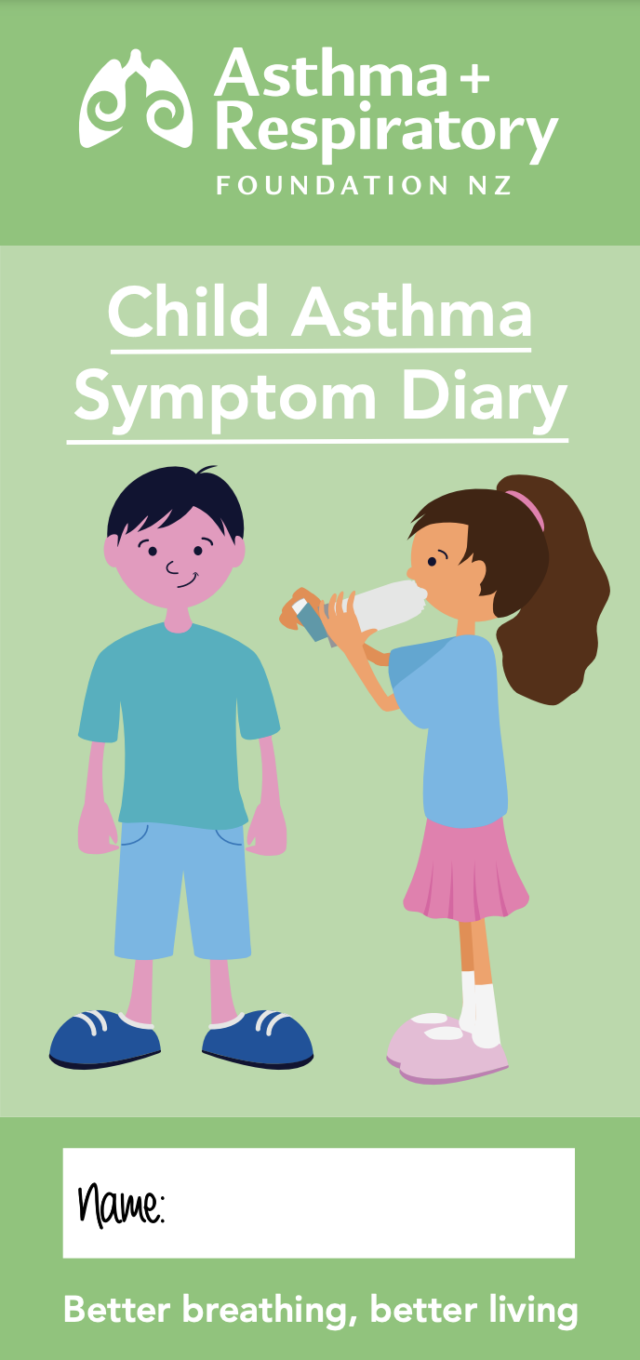With your help, most children can learn to eventually manage their own asthma. However, you will still need to check that their asthma remains well-controlled and watch for changes.
What is well-controlled asthma?
To work out if your child’s asthma is well-controlled, think back to their symptoms over the previous four weeks. Has your child:
- Had two or more asthma symptoms (wheezing, breathlessness, coughing) each week?
- Used their reliever inhaler two or more times each week to deal with symptoms?
- Woken in the night or morning with asthma symptoms?
- Been prevented from doing daily activities because of asthma (school, sports, play)?
If you answered ‘no’ to all these questions, then your child’s asthma is most likely well-controlled.
If you answered ‘yes’ to one or two of these questions, then your child’s asthma is partially controlled.
If you answered ‘yes’ to three or four of these questions, then your child’s asthma is poorly controlled and you should visit your healthcare practitioner for a review of your child’s asthma.
Follow an asthma action plan
All children with asthma should have a written asthma action plan. A Child Asthma Action Plan is a “traffic light”-based plan, personalised by your child’s healthcare practitioner. It gives clear step-wise instructions for parents and carers on how to recognise and respond to worsening asthma symptoms, using the medicines prescribed for your child. It also includes how to respond to an ‘asthma emergency’ (a severe asthma attack), and when you need to call an ambulance.
An asthma action plan should be updated at least once a year, or any time there is a change in your child’s medicine or dose.
Printed asthma action plans are provided free of charge to healthcare providers, or they can be downloaded from the Foundation’s website. A digital version is also available and can be completed by your healthcare practitioner during your appointment. This can then be sent to you via Manage My Health, so that you can easily share it with family, caregivers, school, dance, gym, sports coaches etc.
Keep your house and car smoke-free and vape-free
Smoking and second-hand smoke contributes to the risk of developing asthma and worsens asthma symptoms. Children who live in a home with a smoker are more likely to have respiratory infections. These infections are a known trigger for asthma. Chemicals from cigarette or tobacco smoke are absorbed into the environment (e.g., into furniture, clothes and car interiors). It has been shown that children with asthma whose parents smoke have more asthma symptoms than children whose parents don’t smoke. Exposing young babies to cigarette smoke increases the risk of asthma and bronchial problems.
If a woman smokes during pregnancy, the chemicals in the smoke are passed on to the baby. These chemicals affect the cells of the developing lungs. This may increase the baby’s chances of having lung problems such as asthma.
The use of electronic cigarettes (also known as e-cigarettes or vapes), and exposure to second-hand vaping emissions, can cause acute respiratory problems, although the long-term effects are unknown at this stage. Exposing children to the toxic substances emitted from a vape can irritate their lungs, cause coughing and worsen symptoms of respiratory conditions such as asthma. Click here for information on vaping.
Make it a rule that your home is smokefree at all times for everyone. Let other people know, asking them to go outside to smoke. A total ban on smoking and vaping in the house is the best way to protect your children. It is now illegal to smoke or vape in cars with children under the age of 18 present. You can find out more about this here.
Tips and information for managing your child’s asthma:
- Share your child’s asthma action plan with other family, regular caregivers, your child’s teachers, dance, gym, sports coaches etc.
- Ensure your child has a reliever inhaler available to them at school or day-care.
- If your child has a preventer inhaler, help them remember to take it daily by making it part of their everyday routine. Many children take it after brushing their teeth.
- Protect your child’s health by ensuring they get a seasonal annual flu vaccine and regular COVID-19 boosters, as directed by the Ministry of Health.
- Learn what to do in an asthma emergency, with our downloadable poster. You can print this out for home or share it with your child’s school.
- Use your asthma symptom diary to identify triggers and then find ways to reduce your child’s exposure to these triggers. If cold air is a trigger, you could encourage them to cover their nose and mouth with a scarf when outside. If pollen is a trigger, you could keep windows shut on windy days or when certain plants are in bloom.
- Encourage your child to exercise – as this will help build lung strength. Make sure your child knows to warm up and warm down before and after activities.
- Make sure you ask your healthcare practitioner lots of questions about asthma so both you and your child understand what’s happening and how to use your medicines. For more information, you could visit your local asthma society. They provide free advice and education on managing asthma.
- Help your child understand their asthma by sharing some child-friendly asthma resources with them, like the Sailor the Pufferfish Digital Classroom, or animations from our Parents’ Asthma Toolkit.
- Make your home smoke and vape-free. Cigarette smoke and vape fumes can trigger asthma attacks.
- Try to keep your home as warm, dry and well-ventilated as possible. Read more.
For more information on child asthma, download our booklet: Managing Your Child’s Asthma. You can also watch our webinar: Helping your child manage their asthma




